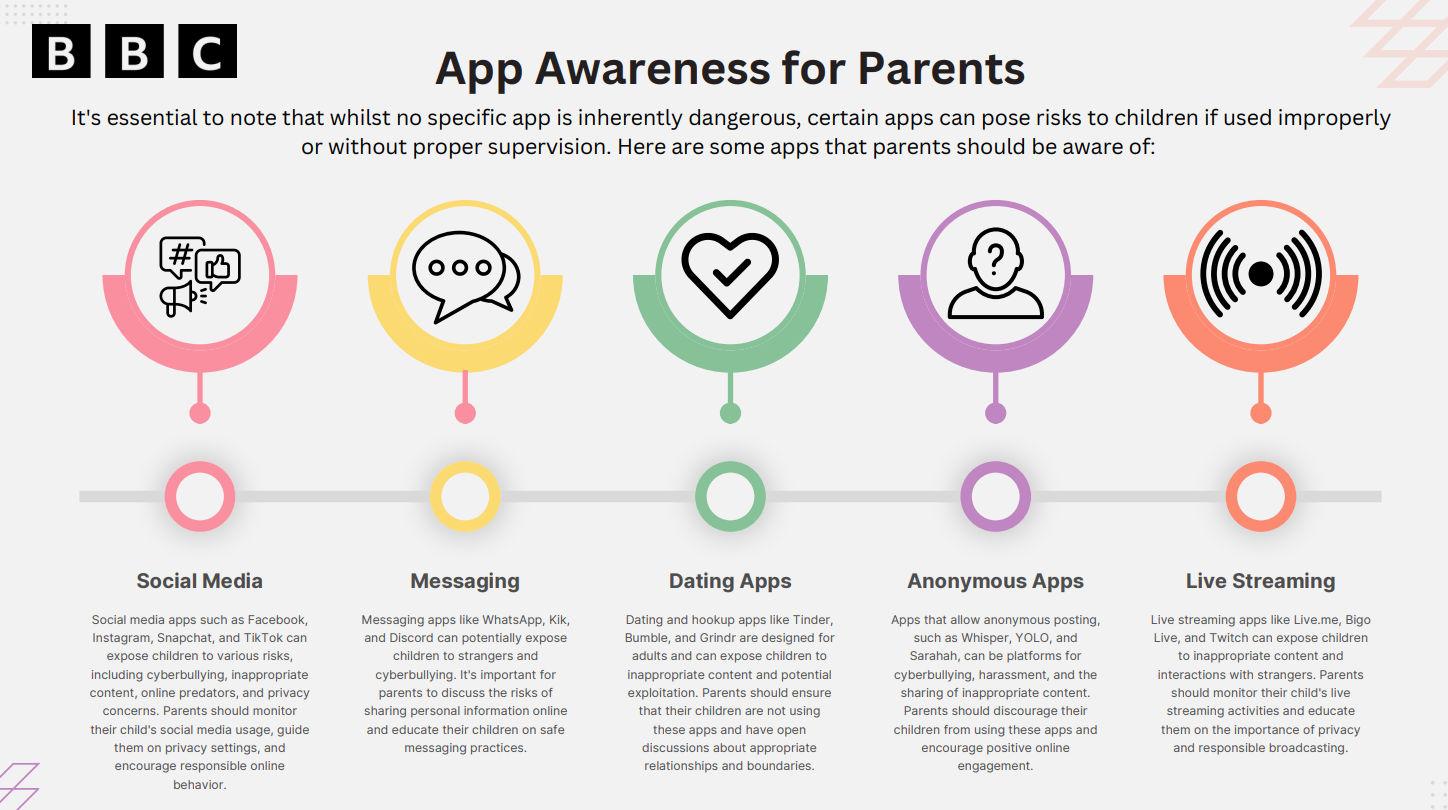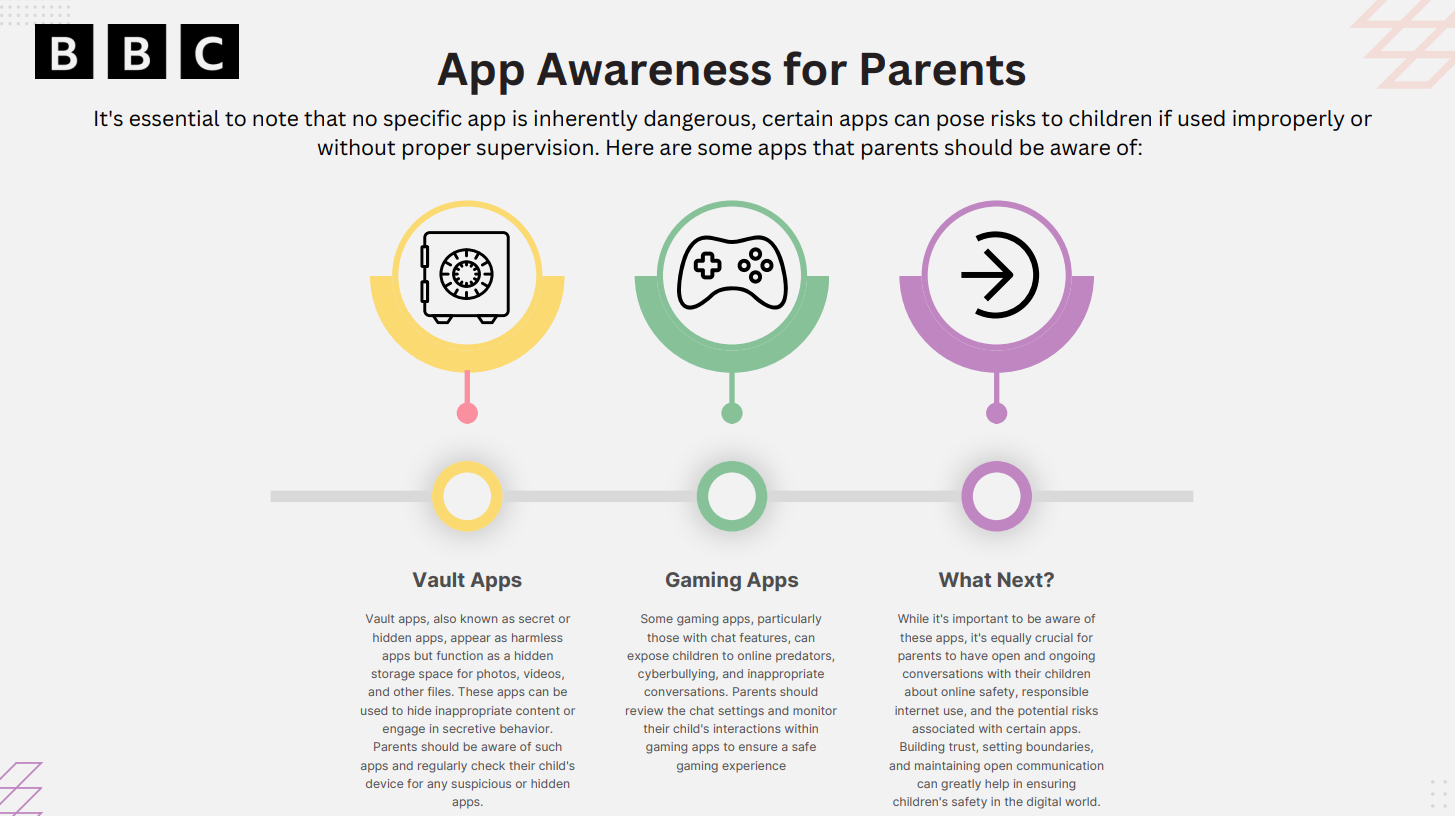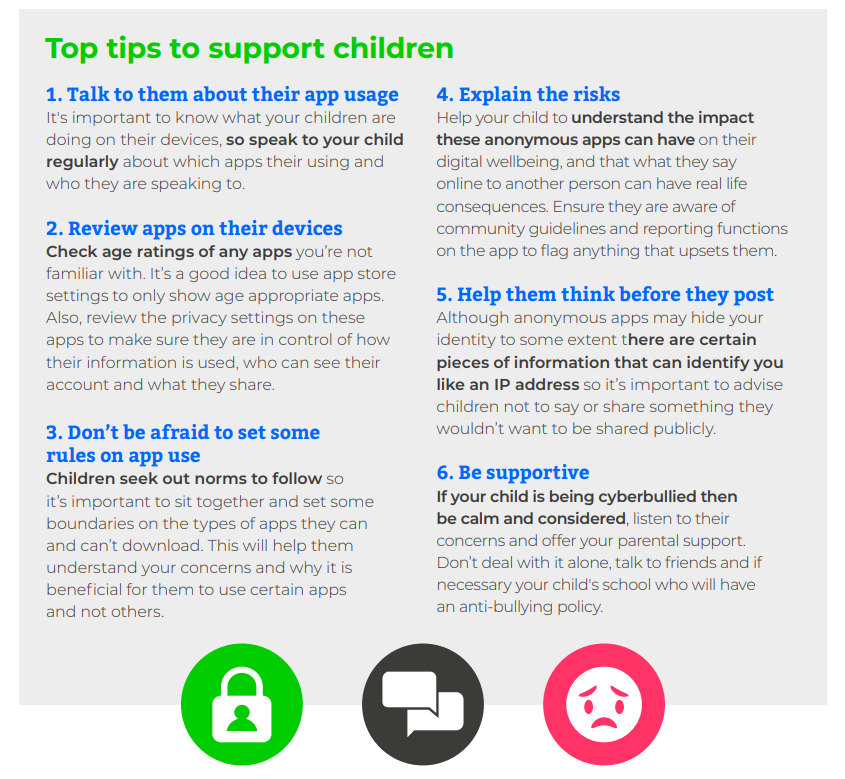Online Safety
At Ford Primary School we use an online filtration system, this blocks out any inappropriate websites from being accessed. If there is an attempt to access a blocked website, this will trigger a notification to our IT department, who will then notify an appropriate member of staff at school. The notification will state who the pupil is and what they attempted to access or search for. This will allow the member of staff to follow up the notification and deal with it appropriately.
Online Safety for Children
Reference: NSPCC
Talking regularly with your child can help keep them safe online. Having this conversation helps to prepare your child from an early age, so they can safely explore the internet and know who to speak to if things go wrong. It's also important to listen to your child and give them a chance to talk about what they're experiencing online, what apps and sites they use and who they're talking to.
Keeping children safe online | NSPCC
Help keep children safe online with Techosaurus! | NSPCC - Techosaurus is aimed at little ones who are starting to use technology and the internet, and keeps the conversation around online safety positive. Techosaurus will help your child to form healthy online habits, routines and behaviours from a young age, and build basic knowledge and skills related to online safety.
Online safety quiz | NSPCC - This is a useful quiz for any child who is accessing the internet. It tests to see if your child knows how to be safe online, and gives advice based on the answers your child gives.
Start conversations with your child about online safety with the NSPCC's new book Techosaurus saves the school. https://youtu.be/a5KspVdbOA4 - This is aimed at little ones who are starting to use technology and the internet, our new book helps teach them to have fun whilst remaining safe online.
If you’re stuck, not sure what to do, or if you’re worried about your child, you can also contact the NSPCC trained helpline counsellors on 0808 800 5000.
Texting and Phone Safety:
Netflix’s ‘Adolescence’ just pulled back the curtain on something every parent, educator, and mentor needs to know—the hidden language of emojis. Online, young people are communicating in ways that most adults completely miss. What looks innocent could have a much darker meaning.
Here are some of the codes being used:
🔴 Red Pill – “I see the truth.” Used in toxic male spaces to mean waking up to supposed hidden ‘truths’ about women and society, often linked to misogynistic ideologies.
🔵 Blue Pill – Represents those who are “blind to the truth” or still believe in mainstream views about relationships and gender dynamics.
💥 Dynamite Emoji – An “exploding red pill,” meaning someone is a radicalised incel.
🫘 Kidney Bean – A symbol linked to incel culture, sometimes mocking women.
💯 100 Emoji – Tied to the “80/20 rule,” the belief that 80% of women are only attracted to 20% of men.
🕳️ Black Hole – Used to express depression, hopelessness, or being sucked into negative online spaces.
🌪️ Tornado – Represents chaos or feeling overwhelmed, sometimes used to indicate mental distress.
🐸 Frog Emoji – Associated with alt-right and extremist meme culture, often linked to Pepe the Frog, which has been co-opted by some toxic online groups.
🦅 Eagle – A symbol of extreme nationalism, sometimes used in far-right online spaces.
💀 Skull – While often just slang for “that’s funny” or “I’m dead (from laughing),” in certain groups, it can signal darker themes like nihilism or self-harm.
❤️ 💜 💛 💗 🧡 Heart Colours – Not just about love!
❤️ = Love
💜 = Lust
💛 = “Are you interested?”
💗 = Interested but not in sex
🧡 = “You’ll be okay”
So what should parents do?
1️⃣ Get Curious, Not Combative – Ask open-ended questions: “I saw something about emojis meaning different things. Have you heard of this?” Keep the conversation light.
2️⃣ Create a Judgment-Free Zone – If your child feels like they’ll be punished for opening up, they won’t. Make it clear you’re there to listen, not just lecture.
3️⃣ Decode Together – Ask them to explain their digital world. What do different symbols mean? Who are the influencers they follow? Don’t assume—ask.
4️⃣ Teach Critical Thinking – Help them question online content. “Why do you think some groups push this idea? Who benefits?” Arm them with questions, not just rules.
5️⃣ Monitor Without Spying – Open conversations work better than secret surveillance. Make checking in on their online spaces a normal part of parenting, not a crisis move.
6️⃣ Be Real About Manipulation – Explain how toxic online groups groom young people by making them feel special, included, or like they have ‘insider knowledge.’
7️⃣ Build Their Offline Confidence – The more they feel valued and confident in the real world, the less they’ll seek validation in dangerous online spaces.
The digital world is evolving faster than most adults can keep up. But we don’t have to be in the dark.



